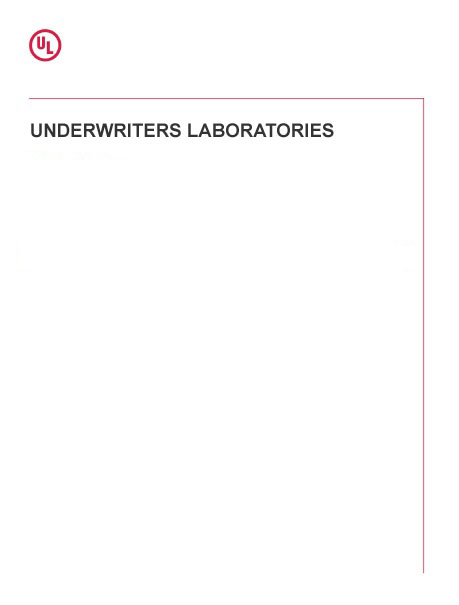
UL 268
Click here to purchase
Please note: All interim revisions for this edition available at time of your purchase will be included.
Smoke Detectors for Fire Alarm Systems
UL 268
1 Scope
1.1 This Standard sets forth requirements for smoke detectors and mechanical guards to be employed in ordinary indoor locations in accordance with the following:
In the United States:
a) National Fire Alarm Code, NFPA 72.
In Canada:
b) Standard for the Installation of Fire Alarm Systems, CAN/ULC-S524;
c) National Building Code of Canada; and
d) National Fire Code of Canada.
1.2 A smoke detector (e.g. ionization-type, photoelectric-type and the like) as covered by this Standard consists of an assembly of electrical components arranged to detect one or more products of combustion. The products of combustion may consist of gases, water vapor, and visible as well as invisible smoke particles. The detector includes provision for the connection to a source of power, signaling, and optional remote control circuits. Additional functionality, such as a heat detector, or audible signaling appliance/device, or both, is permitted to be incorporated as part of the smoke detector assembly.
1.3 This standard covers the following types of detectors:
a) Detectors intended for open area protection and for connection to a compatible power supply or control unit for operation as part of a fire alarm system.
b) Detectors intended solely for control of releasing devices such as electromagnetic door holders, fire dampers or smoke dampers.
c) Detectors intended for both applications described in (a) and (b) above, and
d) In Canada, duct detectors.
1.4 This standard does not cover the following:
In the United States (a – f):
a) Control units to which the detectors are intended to be connected that are covered by the Standard for Control Units for Fire-Protective Signaling Systems, UL 864;
b) Self-contained single and multiple station smoke alarms, not intended for connection to a system control unit, that are covered by the Standard for Single and Multiple Station Smoke Alarms, UL 217;
c) A heat detector incorporated as a part of a smoke detector assembly, and covered by the Standard for Heat Detectors for Fire Protective Signaling Systems, UL 521; except for the requirements of the Fire Test (Heat Detector);
d) Fire tests for smoke detectors integral with combination door closers and holders that are covered by the Standard for Door Closers-Holders, With or Without Integral Smoke Detectors, UL 228;
e) Commercial-residential detectors not intended for connection to a system control unit that are covered by the Standard for Smoke Detector Monitors and Accessories for Individual Living Units of Multifamily Residences and Hotel/Motel Rooms, UL 1730;
f) Detectors for monitoring the smoke density within flues or stacks;
In Canada (g – k):
g) Control units that are covered by the Standard for Control Units for Fire Alarm Systems, ULC-S527;
h) Self-contained single and multiple station smoke alarms that are covered by the Standard For Smoke-Alarms, CAN/ULC-S531;
i) A heat detector incorporated as a part of a smoke detector assembly, and covered by the Standard For Heat Actuated Fire Detectors for Fire Alarm Systems, CAN/ULC-S530;
j) Fire tests for smoke detectors integral with combination door closers and holders that are covered by the ULC/ORD-C228, Door Closers and Holders;
k) Detectors for monitoring the smoke density within flues or stacks; and
l) Wireless Smoke Detectors.
1.5 These requirements also cover all remote accessories that are intended to be connected to a smoke detector.
Product Details
- Edition:
- 7
- Published:
- 01/11/2016
